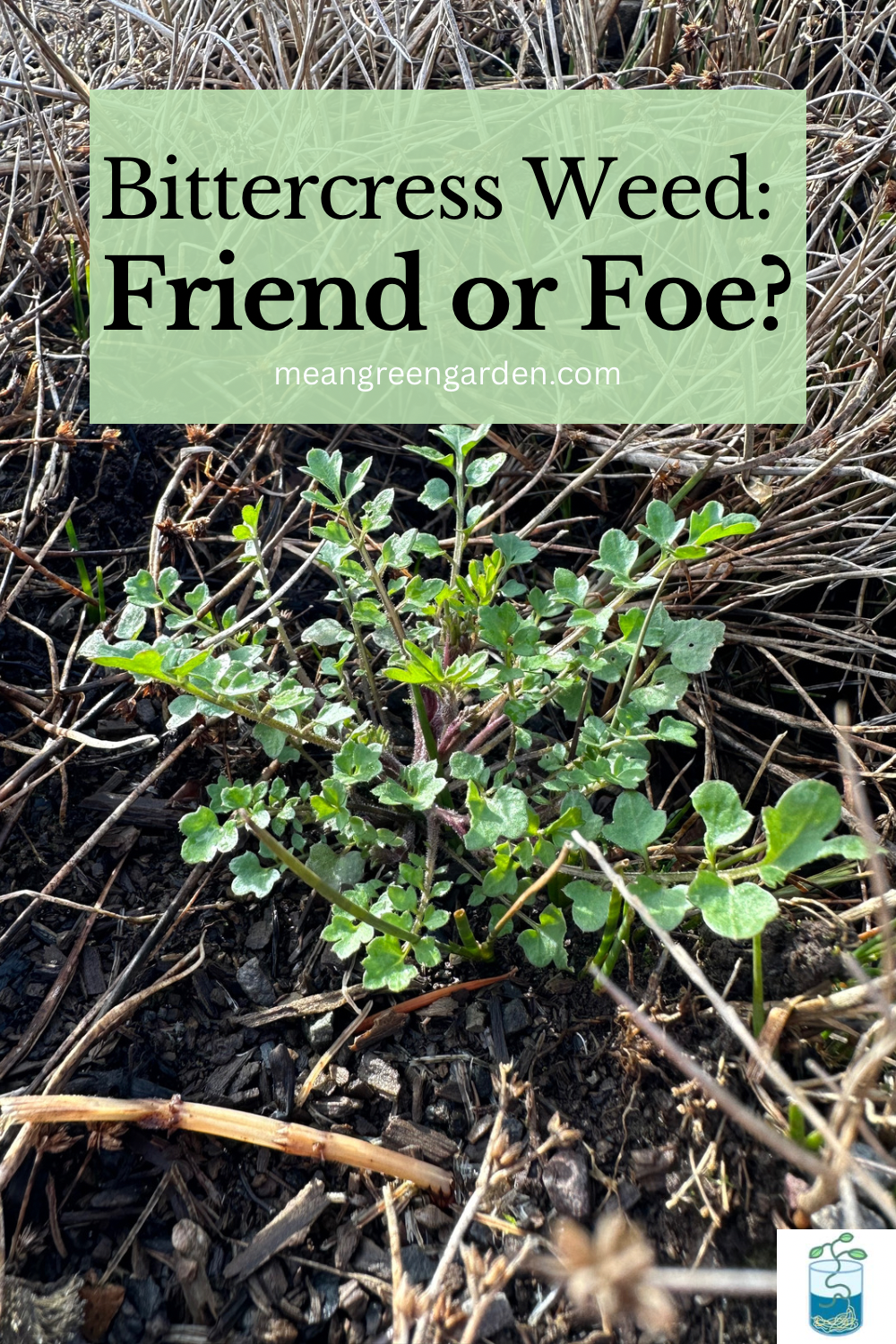Bittercress Weed: Friend or Foe?
This short guide will teach you about bittercress, a common weed in wet areas. Learn how to identify this plant and use it with other foods. Disclaimer: when harvesting plants be 100% sure that the plant you pick is the plant you intend to consume.
Bittercress Cardamine hirsuta
Bittercress is an elusive weed that goes by many names: hairy bittercress, popweed, and “that dang weed that spreads everywhere.” The plant’s botanical name is Cardamine hirsuta.
This winter annual grows in moist regions around the world. It is in the mustard family known as Brassicaceae. Similar to mustards, cabbages, and kales in this family, bittercress is entirely edible!
The flavor of bittercress is a bit like mustard and bok choy mixed together. It has a mellow spiciness and is the perfect topper for sandwiches, salads, and charcuterie boards. Use this spicy weed as you would a spicy mix of microgreens.
Identification of Bittercress
Bittercress can be identified by its leaf shape, flowers, and seed pods. The leaves grow in a rosette from a central point. They are odd-pinnately-compound. Each leaf has a lobed margin.
This plant grows in moist, chilly conditions. It is commonly found in lawns, plant nurseries, and gardens. Bittercress is found in most places because it spreads readily by seed. Although it spreads, it only grows during cool and wet weather. It becomes difficult to find this plant when spring transitions into summer and temperatures get warmer.
Bittercress grows a flower stalk with small white flowers at its tip during late winter and early spring. When days grow longer and temperatures get warmer, the plant knows it is time to flower and seed.
Bittercress flowers resemble other flowers in the Brassicaceae family. They form a cross with their petals. From these flowers grow seed pods called siliques. If touched, a ripe silique can explode seeds up to 3 feet in the air (Royal Horticultural Society)! They pop open on contact and disperse the seeds far from the mother plant.
Benefits of Bittercress
Bittercress is typically looked at as a problem plant with a spreading behavior. It is the bane of many a gardener in the cooler parts of the year. Bittercress spreads in nursery settings, and it costs these nurseries to have the weeds pulled. For these reasons, it may be hard to see the benefits.
Look at this winter weed a little closer and you’ll see it is truly incredible! It can be uprooted easily. Bittercress is flavorful at a time when most plants are dormant or deciduous. It also has tons of vitamins and minerals and is especially rich in iron and Vitamin C (Basumatary and Narzary).
Consider this weed one of the nutritional powerhouses you can rely on. You can find bittercress in most places on Earth. Its usefulness is comparable to other commonly found edible weeds like dandelions, purslane, and mallow.
Downsides of Bittercress
Bittercress spreads readily by seed and can quickly spread out of control. Like most weeds, it is a self-seeder and should be grown with care.
You can combat the spreading by harvesting bittercress frequently. If you pull the young plants before they flower and set seed, you’ll dramatically reduce the number of seeds germinating in the garden.
Bittercress picks up heavy metals in the soil, so be sure to harvest this weed from areas free of harmful heavy metals. If pulling bittercress weeds in areas with heavy metals do not put them in the compost.
Conclusion
Bittercress, aka popweed, hairy bittercress, and Cardamine hirsuta are all names for the same plant: a small spicy annual with the ability to send seeds exploding into the air. Eating this weed gives you precious nutrients that are hard to find in grocery store produce. Eating weeds is revolutionary; it is one way anyone can gain valuable nutrition for free.
I hope this guide has helped you. If you’d like to learn about more edible weeds click here. Thank you, and happy growing!
Sources
Royal Horticultural Society. Weeds: The Beauty and Uses of 50 Vagabond Plants. Welbeck Publishing, 2021.
Basumatary, Sanjay, and Hwiyang Narzary. “Nutritional Value, Phytochemicals and Antioxidant Property of Six Wild Edible Plants Consumed by the Bodos of North-East India.” Mediterranean Journal of Nutrition and Metabolism, vol. 10, no. 3, 15 Nov. 2017, pp. 259–271, 10.3233/mnm-17168. Accessed 27 Sept. 2019.
All photos were taken by Jerad Bryant.




